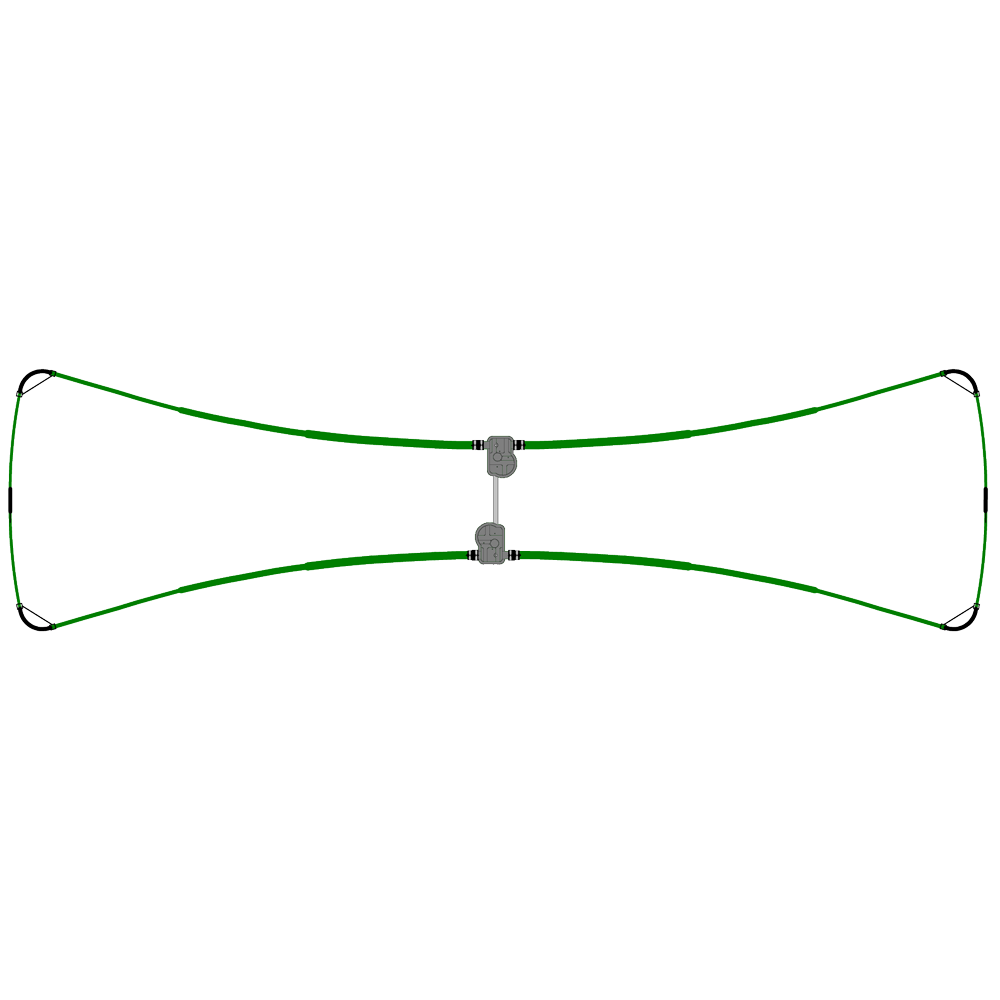Description
It doesn’t look like a traditional beam, but it sure works DX like a SteppIR!
The SteppIR UrbanBeam Yagi is a fantastic choice for those that are limited by lot size, regulations (HOA’s) or even the critical eye of neighbors and spouses. The UrbanBeam has a unique appearance -some customers have remarked it looks like a bow-tie, or a butterfly! Regardless of its shape, the UrbanBeam delivers outstanding performance for an antenna that weighs only 45 lb (20.5 kg) and has a wind load (EIA-222-C) of a mere 4.4 sq ft (.41 sq m) (*projected area of 6.44 sq ft). The overall physical length of the Yagi is 30.5 ft (9.3 m), which allows for a turning radius of just 15 feet (4.72 m).
-
- UrbanBeam Yagi
- 2 el on 20m-6m
- rotatable dipole 40/30m
- 48″ boom
- 15.5 ft Turning Radius
- 30.5 ft Longest Element
- 6.44 sq ft projected area
- Weight: 45 lbs
-
Weight 45 lb / 20.5 kg g *Projected Area 6.44 sq ft / 0.60 sq m Turning Radius 15.5 ft / 4.72 m Boom Length 4.0 ft / 1.22 m Longest Element 30.5 ft / 9.3 m Boom Outside Diameter 1.75 in / 4.45 cm Power Rating 3 kW Frequency Coverage **6.95 MHz—54 MHz Cable Requirements 12 conductor 22 ga shielded -
Band dBi Gain (Freespace) dB F/R (Freespace) 40 m 1.6* 9.55(F/S) 30 m 1.77** 9.63(F/S) 20 m 6.5 12 17 m 6.6 12.6 15 m 6.6 14 12 m 6.7 15.7 10 m 6.65 14.8 6 m* 6.15 4 * A full size dipole is referenced at 2.1dBi
** Measured SWR is 2.3:1 for this model on 30m
*Projected area is the total perpendicular surface area measured in square feet/square meters, that is exposed to wind. To calculate wind load you always take the largest projected area whether that is from the perspective perpendicular to the boom or perpendicular to the elements. In the case of SteppIR Yagi’s, the maximum projected area will always be the sum of the surface area’s perpendicular to the Yagi elements. This calculation is a constant number and will not change regardless of EIA specification changes. Do not mistake this projected area calculation as anything more than a data point to present to your structural engineer, tower manufacturer or rotator manufacturer so that they can determine what is necessary for your application.
When sizing an antenna to a tower, many factors need to be taken into consideration including, but not limited to: projected area of antenna in square feet or square meters, weight of the antenna and other items on tower, turning radius, element lengths, antenna height, location exposure category, locations three-second gust wind-speed, locations maximum radial ice loading.
Improper specification of an antenna or rotator to a tower can result in product failure, injury or death. SteppIR is not an expert on tower or rotator sizing and for this reason will never make any kind of a recommendation – this specification process is meant for industry professionals such as a structural engineer, tower manufacturer or rotator manufacturer. Please do not attempt to self-specify our products – the information provided by SteppIR is to be utilized by industry professionals only.
















